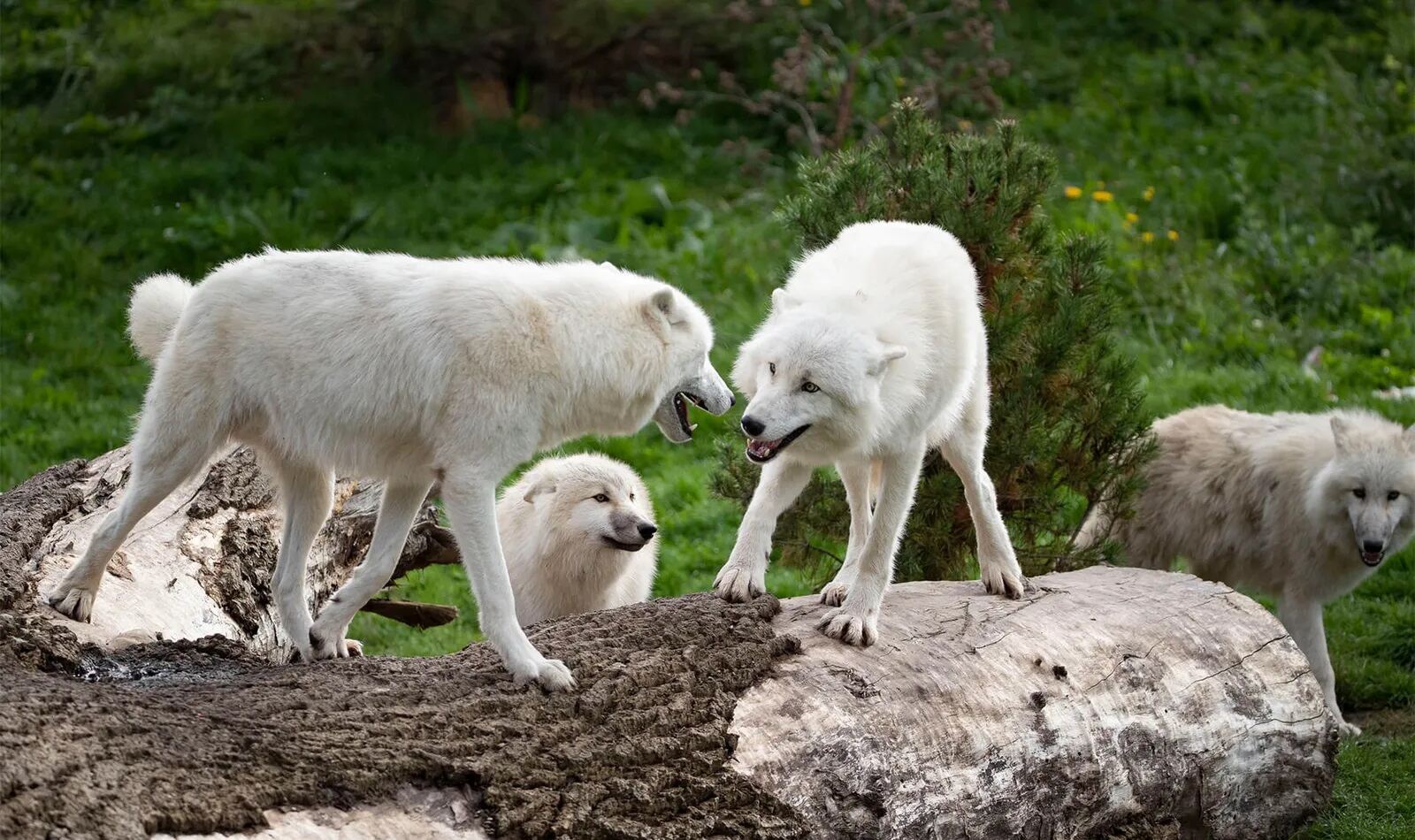
The Arctic wolf, also known as the white wolf, is a majestic creature that roams the frozen tundra of the Arctic regions. These wolves are superbly adapted to the harsh and unforgiving environment they call home. Their thick, white fur provides excellent insulation against the biting cold, while their keen senses and remarkable hunting abilities make them formidable predators in their icy domain.
In this article, we will delve into the fascinating world of the Arctic wolf, uncovering 18 intriguing facts that shed light on their behavior, habitat, and unique adaptations. From their social structure and hunting techniques to their remarkable resilience in the face of extreme weather, the Arctic wolf's story is one of survival and strength in one of the most challenging environments on Earth. Join us as we embark on a journey to discover the remarkable traits and behaviors that make the Arctic wolf a true symbol of the unforgiving yet awe-inspiring Arctic wilderness.
Key Takeaways:
- Arctic Wolves are resilient survivors, adapted to the harsh Arctic climate with teamwork, agility, and intelligence. Their unique howling and family bonds make them vital to the Arctic ecosystem.
- The Arctic Wolf’s adaptability and resilience symbolize the majestic wilderness of the Arctic. Their thick fur, keen senses, and varied diet enable them to thrive in one of the harshest environments on Earth.
The Arctic Wolf is a Master of Survival
The Arctic Wolf, also known as the white wolf or polar wolf, is a magnificent creature perfectly adapted to the harsh conditions of the Arctic. Here are some fascinating facts about these incredible predators:
The Arctic Wolf's Fur is Not Always White
The Arctic Wolf's fur is not always white; it can also have a blueish or greyish tinge. This variation in fur color helps them blend into their surroundings, making it easier to hunt and evade predators.
They Have Thick Fur and a Layer of Fat
Arctic Wolves have a double-layered coat comprising a dense undercoat and longer guard hairs, providing insulation in the frigid Arctic climate. Additionally, they have a layer of fat beneath their skin, further insulating them from the cold.
Arctic Wolves are Masters of Teamwork
These wolves are highly social animals and live and hunt in packs, which can consist of up to seven members. Their collaborative hunting techniques enable them to take down larger prey, such as muskoxen and Arctic hares.
Their Keen Sense of Hearing is Impressive
Arctic Wolves have exceptional hearing, allowing them to detect the movements of prey under the snow. Their large, well-pricked ears help them pinpoint the location of potential meals, giving them an advantage in the hunt.
They Have Incredible Adaptations for the Arctic Climate
Arctic Wolves have several physiological adaptations that allow them to thrive in their icy habitat. For instance, their smaller ears and shorter muzzles reduce heat loss, while their compact bodies minimize exposure to the cold.
Arctic Wolves are Excellent Long-Distance Travelers
These remarkable creatures are known for their extensive travels, covering vast distances in search of food. Their ability to traverse the challenging Arctic terrain showcases their remarkable endurance and resilience.
They Have a Varied Diet
Arctic Wolves are opportunistic feeders, consuming a diverse range of prey, including muskoxen, caribou, Arctic hares, and lemmings. This adaptability ensures their survival in the ever-changing Arctic ecosystem.
Arctic Wolves are Expert Diggers
These wolves are adept at digging dens in the snow, providing shelter from the harsh weather and a safe haven for raising their young. The dens also serve as a refuge during extreme weather conditions.
Their Population Faces Threats
While Arctic Wolves are not extensively hunted by humans, their populations are threatened by habitat loss and climate change. These factors can have a significant impact on their prey availability and overall survival.
Arctic Wolves are Highly Intelligent
These wolves exhibit complex social behaviors and demonstrate problem-solving skills, making them highly intelligent creatures. Their ability to communicate and cooperate within their pack is crucial for their survival.
They Have a Unique Howling Technique
Arctic Wolves communicate through a combination of howls, barks, and body language. Their distinctive howls can carry over long distances, serving as a means of long-distance communication within the pack.
Arctic Wolves are Agile Hunters
These wolves possess remarkable agility and speed, allowing them to pursue and capture their prey with precision. Their keen hunting instincts and physical prowess make them formidable predators in their environment.
They Play an Integral Role in the Ecosystem
Arctic Wolves play a vital role in maintaining the balance of the Arctic ecosystem. As top predators, they regulate the populations of their prey species, preventing overgrazing and ensuring the health of the ecosystem.
Arctic Wolves Have Adapted to the Continuous Daylight of Summer
In the summer months, Arctic Wolves experience continuous daylight due to the phenomenon of the midnight sun. Their ability to adjust their activity patterns to this unique environment showcases their remarkable adaptability.
They Exhibit Strong Family Bonds
Arctic Wolf packs are characterized by strong family bonds, with each member contributing to the survival and well-being of the group. This cohesion is essential for their collective success in the challenging Arctic environment.
Arctic Wolves are Resilient Survivors
Despite the formidable challenges posed by the Arctic climate, these wolves have evolved to be resilient survivors. Their ability to thrive in one of the harshest environments on Earth is a testament to their remarkable adaptability.
They Symbolize the Majesty of the Arctic Wilderness
The Arctic Wolf stands as a symbol of the majestic and awe-inspiring wilderness of the Arctic. Their grace, strength, and adaptability embody the spirit of this remote and captivating region.
The Arctic Wolf's ability to thrive in one of the most unforgiving environments on the planet is a testament to the remarkable adaptability and resilience of this magnificent species. As they navigate the challenges of the Arctic landscape, these wolves continue to captivate the imagination and inspire awe, embodying the untamed spirit of the North.
Conclusion
The Arctic wolf is a fascinating and resilient creature that has adapted to thrive in one of the harshest environments on Earth. With its striking appearance and remarkable behavioral traits, this majestic predator continues to captivate the imagination of people around the world. From its unique hunting strategies to its crucial role in maintaining ecological balance, the Arctic wolf stands as a symbol of the remarkable adaptability and strength of nature. As we strive to understand and protect these magnificent animals, we gain valuable insights into the delicate balance of the Arctic ecosystem and the importance of conservation efforts in preserving the diversity of our planet's wildlife.
FAQs
What makes the Arctic wolf's fur white?
The Arctic wolf's white fur acts as a highly effective camouflage in its snowy habitat, allowing it to blend seamlessly with the surrounding environment and enhancing its hunting prowess.
How does the Arctic wolf survive in extreme cold?
The Arctic wolf has several adaptations for surviving in its harsh environment, including a thick insulating coat, compact body shape to minimize heat loss, and specialized blood circulation to keep its extremities warm.
Was this page helpful?
Our commitment to delivering trustworthy and engaging content is at the heart of what we do. Each fact on our site is contributed by real users like you, bringing a wealth of diverse insights and information. To ensure the highest standards of accuracy and reliability, our dedicated editors meticulously review each submission. This process guarantees that the facts we share are not only fascinating but also credible. Trust in our commitment to quality and authenticity as you explore and learn with us.


